How to Optimize Industrial Power Plant Boiler Performance for Lower Operating Costs
Industrial power plant boilers are at the core of large-scale energy production. But without continuous performance optimization, they can become fuel-inefficient, maintenance-intensive, and environmentally costly. Even minor inefficiencies in combustion, heat transfer, or system control can result in significant operating losses over time. To remain competitive and sustainable, power plants must adopt a strategic and data-driven approach to performance optimization.
To optimize industrial power plant boiler performance for lower operating costs, focus on air-to-fuel ratio control, flue gas heat recovery, soot blowing and ash management, burner tuning, fuel quality control, and smart automation. Efficiency gains come from reducing excess air, maintaining clean heat transfer surfaces, minimizing unplanned downtime, and implementing real-time monitoring systems. A well-optimized boiler can reduce fuel consumption, cut emissions, extend equipment life, and improve output reliability.
Here’s a strategic breakdown of the most effective optimization measures.
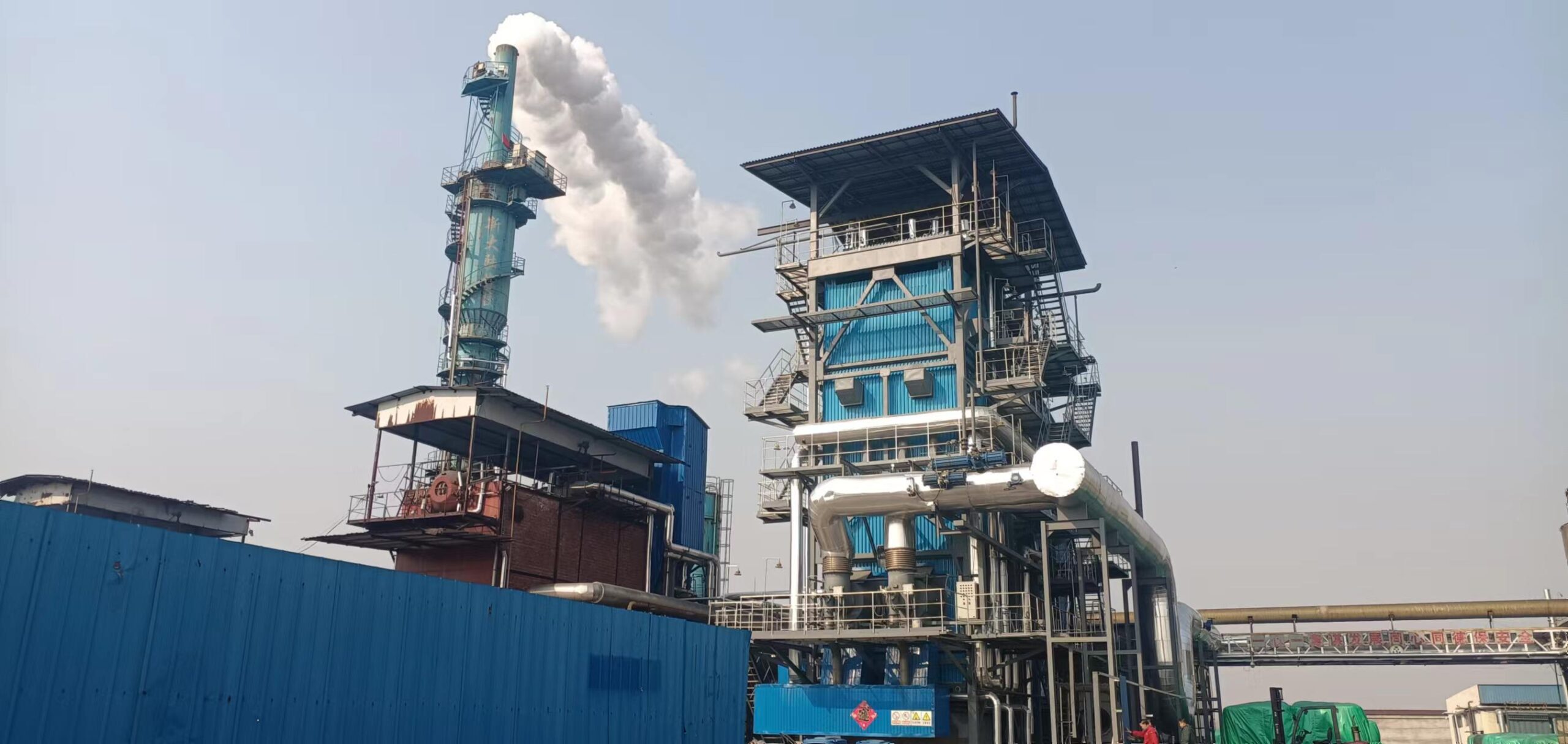
How Does Air-Fuel Ratio Tuning Improve Combustion Efficiency and Reduce Fuel Costs?
In industrial power station boilers—especially large coal, oil, or gas-fired units—controlling the air-fuel ratio is critical for maximizing combustion efficiency and minimizing fuel waste. Most boilers burn fuel by mixing it with excess air to ensure full oxidation. However, too much air lowers flame temperature, reduces heat transfer efficiency, and wastes energy by heating unused oxygen and nitrogen. Too little air causes incomplete combustion, releasing carbon monoxide (CO), unburned hydrocarbons, and increasing soot and fouling. By tuning the air-fuel ratio precisely, plants can optimize heat release, reduce emissions, and achieve measurable fuel savings.
Air-fuel ratio tuning improves combustion efficiency in industrial power station boilers by balancing the minimum amount of air needed for complete combustion while avoiding excess oxygen that causes heat loss. This tuning process increases flame stability, maximizes heat transfer to the working fluid, and reduces flue gas losses. Optimized air-fuel ratios reduce fuel consumption by 2–5%, cut unburned fuel emissions, and lower fan power usage. Over time, this directly translates into lower operating costs, improved boiler reliability, and greater thermal efficiency.
Efficient combustion isn’t just about heat—it’s about how precisely air and fuel work together.
Tuning the air-fuel ratio in power boilers can reduce fuel usage by 2–5% annually.True
This is achieved by minimizing excess air while avoiding incomplete combustion, improving thermal efficiency.
🔧 What Is the Air-Fuel Ratio and Why Does It Matter?
| Term | Definition |
|---|---|
| Stoichiometric Ratio | Ideal air needed for complete combustion (no excess oxygen) |
| Excess Air | Air supplied above stoichiometric requirement to ensure complete burn |
| Air-Fuel Ratio (AFR) | Actual ratio of air mass to fuel mass entering the furnace |
Stoichiometric AFR for natural gas: ~17.2:1
Stoichiometric AFR for coal: ~10:1 (depends on grade and volatile matter)
Too much air = energy loss; too little air = incomplete combustion and emissions.
📊 Combustion Efficiency vs. Excess Air
| Excess Air (%) | Stack O₂ (%) | Combustion Efficiency (%) |
|---|---|---|
| 5% | ~1% | ~89–91% |
| 15% | ~3% | ~86–88% |
| 25% | ~5% | ~83–85% |
| 40%+ | ~7–8% | <80% |
Every 1% rise in stack oxygen (above target) can mean 0.5% to 1% efficiency loss.
🧪 Fuel Savings from Proper Air-Fuel Tuning – Example
| Parameter | Before Tuning | After Tuning |
|---|---|---|
| Average Stack O₂ | 6.5% | 3.0% |
| Combustion Efficiency | 84% | 88% |
| Fuel Consumption (coal) | 12,000 tons/mo | 11,400 tons/mo |
| Fuel Savings | — | 600 tons/month (~5%) |
| Monthly Cost Reduction (@ $100/ton) | — | $60,000/month |
A 4% improvement in efficiency saves $720,000 per year in this mid-size station boiler.
📦 Tools and Methods for Air-Fuel Ratio Tuning
| Method | Function | Benefits |
|---|---|---|
| Flue Gas Analyzer (O₂, CO) | Measures combustion products | Identifies optimal O₂ |
| O₂ Trim System | Automatically adjusts air dampers | Maintains target efficiency |
| Excess Air Curves | Empirical charts for different loads/fuels | Guides tuning process |
| Advanced Controls (PID, AI) | Predictive tuning based on load, temp, CO₂ | Real-time efficiency boost |
| Manual Tuning & Testing | Setpoint adjustments by operator | Useful for small/older units |
Modern systems use oxygen trim loops + CO feedback to continuously optimize in real-time.
📋 Common Signs of Poor Air-Fuel Tuning
| Symptom | Possible Cause |
|---|---|
| High stack oxygen (>6%) | Excess air waste |
| Visible smoke or soot | Incomplete combustion |
| Elevated CO or NOₓ | Poor air distribution or turbulence |
| Low superheater temperatures | Flame heat loss from excess air |
| Frequent burner trips | Instability from lean mixture |
Tuning not only saves fuel—it protects the boiler from damage and derating.
📈 Long-Term Benefits of Optimal Air-Fuel Ratio
| Performance Metric | Benefit from Tuning |
|---|---|
| Fuel Efficiency | 2–5% improvement |
| NOₓ and CO Emissions | 10–30% reduction |
| Fan Power Usage | 5–10% savings (due to lower air volume) |
| Tube Fouling & Sooting | Reduced maintenance |
| Flame Stability | Fewer trips and forced outages |
| Heat Rate (kJ/kWh) | Lower thermal input per MWh |
Air-fuel ratio tuning reduces NOₓ emissions by lowering flame temperature and oxygen surplus.True
Optimal tuning avoids the conditions that lead to thermal NOₓ formation, improving emissions performance.
Summary
Air-fuel ratio tuning is a high-impact, low-cost strategy to boost combustion efficiency, reduce fuel waste, and minimize emissions in industrial power station boilers. By balancing oxygen levels to the combustion load and fuel quality, plants can improve heat transfer, stabilize flame profiles, and cut fuel bills by hundreds of thousands of dollars per year. Whether done manually or with advanced automated controls, AFR optimization is one of the most effective levers for performance and profitability in thermal power generation. Efficient combustion starts not with more fuel—but with smarter control of the air you burn it with.
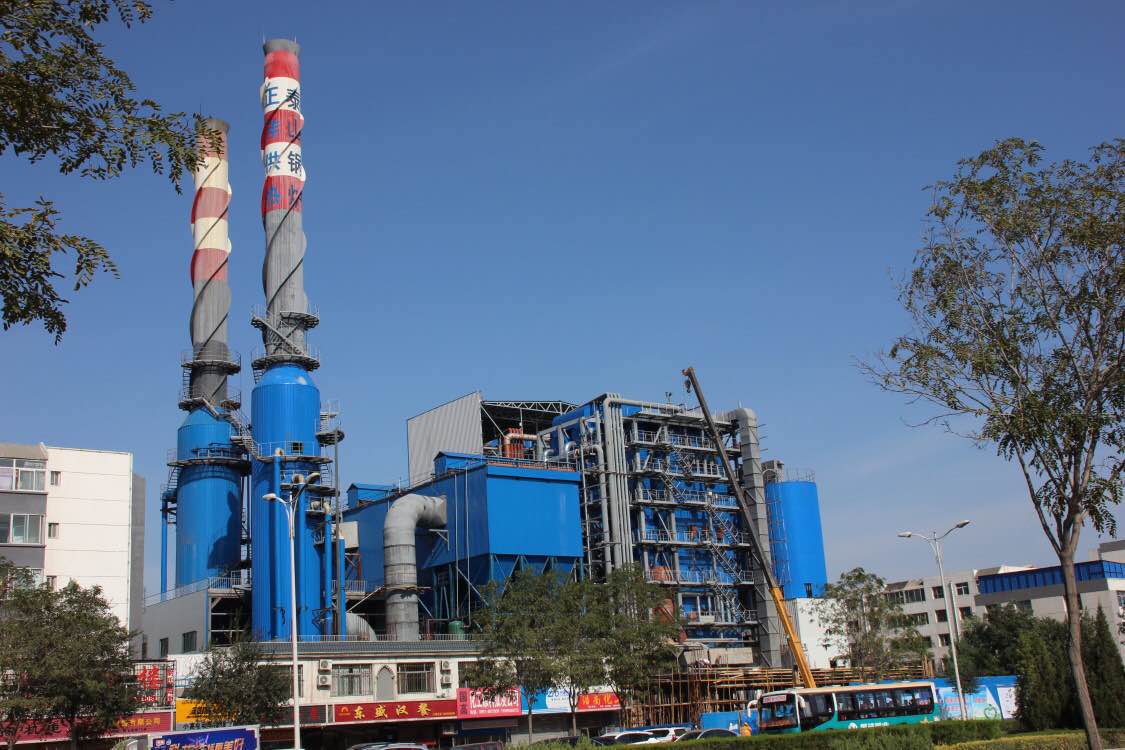
Why Is Flue Gas Heat Recovery (Economizers and Air Preheaters) Vital for Thermal Performance?
In industrial power station boilers, a significant portion of energy is lost with flue gases exiting the stack at high temperatures. These gases still contain substantial thermal energy that, if left unrecovered, results in efficiency losses and higher fuel costs. Heat recovery systems such as economizers and air preheaters are specifically designed to capture this waste heat and return it to the system—either by preheating feedwater or combustion air. This simple principle has profound effects: it lowers flue gas temperature, increases thermal efficiency, reduces fuel consumption, and improves steam generation capacity.
Flue gas heat recovery using economizers and air preheaters is vital for thermal performance in industrial power station boilers because it captures otherwise wasted heat energy from exhaust gases and recycles it to improve boiler efficiency. Economizers preheat feedwater, reducing fuel needed to produce steam, while air preheaters warm incoming combustion air, enhancing flame temperature and fuel utilization. Together, these systems increase thermal efficiency by 3–7%, reduce fuel consumption, and lower stack losses, making them essential for cost-effective and environmentally compliant boiler operation.
Every degree of recovered heat is a degree of savings—and a step toward higher efficiency.
Installing economizers and air preheaters improves industrial boiler efficiency by 3–7%.True
They reduce stack temperature and recover useful heat for feedwater or air preheating, cutting fuel use.
🔧 Key Heat Recovery Systems in Power Boilers
| System | Function | Heat Recovery Target |
|---|---|---|
| Economizer | Recovers heat from flue gases to preheat boiler feedwater | 160–300 °C to ~120–160 °C |
| Air Preheater (APH) | Transfers heat from flue gas to combustion air | 300–400 °C to air at ~150–250 °C |
| Condensing Economizer | Extracts latent heat from flue gas below dew point | Only viable with very low-temp exhaust |
Combined, these systems cut stack losses and improve fuel-to-steam conversion efficiency.
📊 Efficiency Impact of Flue Gas Heat Recovery
| Heat Recovery Type | Efficiency Gain (%) | Fuel Savings (%) | Typical Payback Period |
|---|---|---|---|
| Economizer | 3–5% | 3–5% | 1.5–3 years |
| Air Preheater | 2–4% | 2–4% | 2–4 years |
| Combined System | 5–7% | 5–7% | 2–3 years |
For a 100 TPH boiler, 1% fuel savings = hundreds of tons of coal or gas annually.
🔢 Example: 150 TPH Coal Boiler Fuel Savings with Heat Recovery
| Parameter | Without Recovery | With Economizer + APH |
|---|---|---|
| Flue Gas Exit Temp | 320 °C | 160 °C |
| Boiler Efficiency | 82% | 88% |
| Annual Fuel Use (coal, tons) | 55,000 | 50,000 |
| Fuel Saved | — | 5,000 tons |
| Fuel Cost (@ $100/ton) | — | $500,000/year saved |
These savings pay for the heat recovery equipment in 2–3 years, then continue as profit.
🌡️ How Heat Recovery Improves Thermal Cycle
| Boiler Component | Impact from Recovery System |
|---|---|
| Steam Drum/Generator | Faster pressure build-up, better control |
| Furnace & Combustion | More stable flame due to hotter combustion air |
| Air Heater | Reduces unburned fuel and cold-end corrosion |
| Feedwater System | Higher inlet temperature = less furnace duty |
| Stack/Chimney | Lower exhaust temperatures = fewer heat losses |
More energy stays in the system and less escapes up the stack.
🧰 Installation Considerations
| Design Factor | Engineering Recommendation |
|---|---|
| Flue Gas Flow Rate | Sized for full-load exhaust volume |
| Material Selection | Corrosion-resistant alloys for wet flue sections |
| Gas-Side Fouling Potential | Soot blowers or bypass required |
| Integration with Control System | Tie into SCADA or DCS logic for safety |
| Condensation Risk | Ensure gas temp stays above dew point (unless condensing recovery) |
APH and economizer placement must consider flue gas flow sequencing and cleaning access.
📋 Long-Term Benefits of Heat Recovery
| Benefit | Impact |
|---|---|
| Fuel Efficiency | 3–7% improved thermal performance |
| Fuel Cost Reduction | 5–10% depending on system load |
| Emission Reduction (CO₂) | Less fuel burned = lower carbon output |
| Extended Tube Life | Reduced temperature differential stress |
| Improved Boiler Capacity | More steam output for same input |
Economizers and air preheaters reduce CO₂ emissions by decreasing fuel usage.True
Less fuel burned means proportionally lower carbon dioxide output per MWh of steam or electricity.
Summary
In industrial power station boilers, flue gas heat recovery systems like economizers and air preheaters are essential for achieving peak thermal performance. These technologies reduce stack temperatures, improve fuel utilization, lower emissions, and provide substantial savings on fuel costs. With typical paybacks in 2–4 years and decades of continued benefit, they are not just engineering upgrades—they are financial and environmental imperatives. In boiler efficiency, you don’t just capture energy—you recover profit.
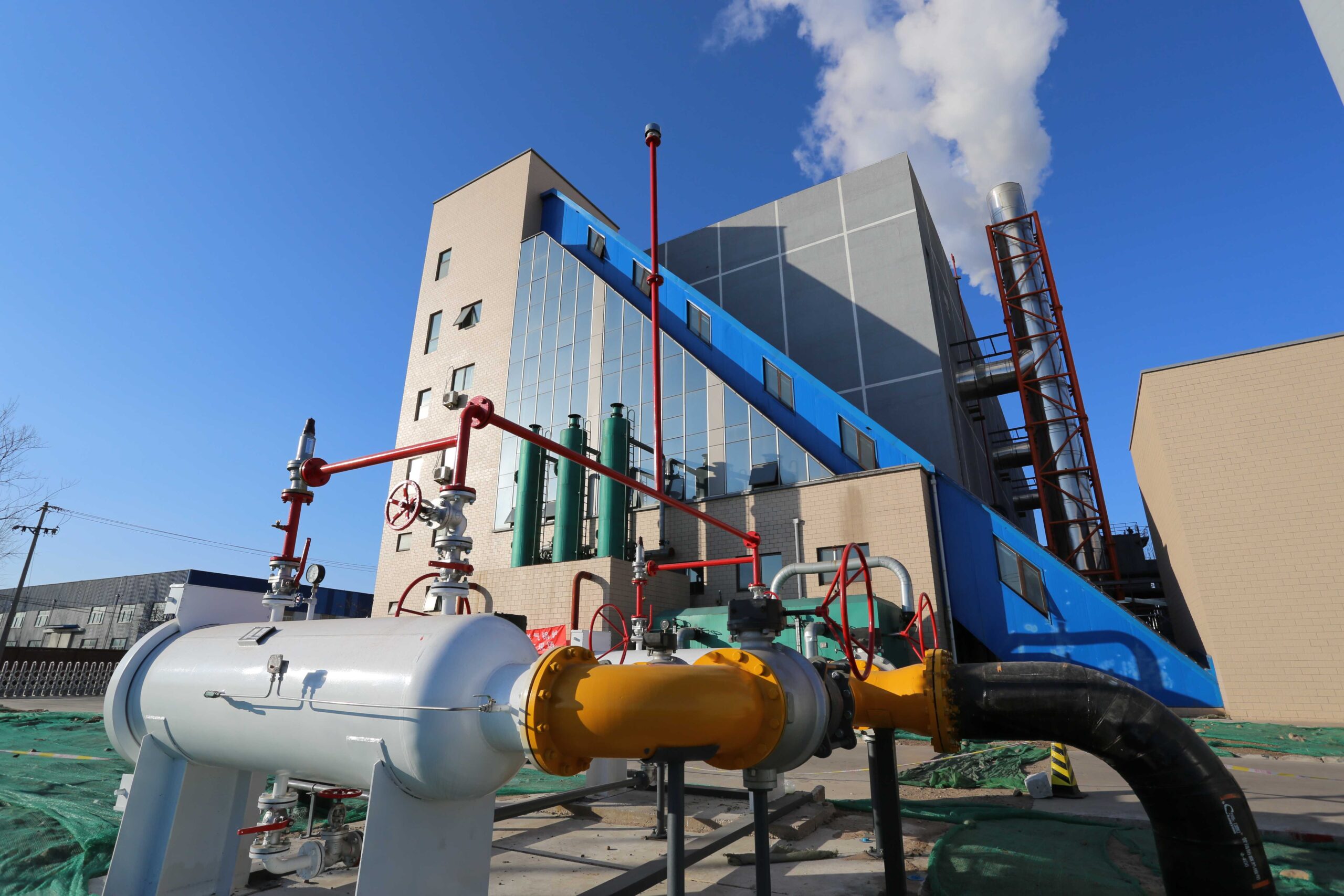
How Do Soot Blowing and Ash Management Sustain Heat Transfer Efficiency?
In industrial power station boilers—especially those burning coal, biomass, or heavy oil—soot, slag, and ash deposits accumulate on heat transfer surfaces such as waterwalls, superheaters, and economizers. These deposits act as insulating layers, significantly reducing the rate at which heat from combustion gases transfers to the working fluid (water or steam). Without regular cleaning, fouling leads to lower thermal efficiency, higher fuel consumption, overheating risks, and costly unplanned shutdowns. That’s why soot blowing and ash management are critical maintenance practices—they preserve heat transfer integrity, stabilize boiler output, and extend asset life.
Soot blowing and ash management sustain heat transfer efficiency in industrial power station boilers by removing insulating deposits from heat exchanger surfaces, restoring direct contact between hot flue gases and metal tubing. This maintains optimal heat flux, steam production, and combustion performance. Neglecting ash removal leads to 5–15% efficiency losses, increases fuel use, and risks tube overheating or boiler derating. Regular mechanical or steam soot blowing, combined with automated ash extraction, ensures consistent boiler output and thermal efficiency over time.
A dirty boiler doesn’t just lose heat—it burns money and invites failure.
Ash and soot fouling on heat transfer surfaces can reduce boiler efficiency by up to 15%.True
Deposits act as thermal insulators, requiring more fuel to maintain steam output.
🔥 Why Heat Transfer Efficiency Degrades Without Cleaning
| Source of Fouling | Effect on Heat Transfer |
|---|---|
| Unburned Carbon (Soot) | Forms black insulating layer on superheater tubes |
| Ash & Slag | Accumulates on economizer and waterwall surfaces |
| Alkali or Chloride Content | Forms sticky residues that bind dust and soot |
| High Sulfur Fuel | Increases acidic condensates and cold-end fouling |
Fouling increases thermal resistance (R-value) between gas and steam, reducing Q in:
Q = ΔT / R(simplified, non-formula expression)
📊 Efficiency Impact of Fouling
| Deposit Thickness | Efficiency Loss (%) | Stack Temperature Rise (°C) |
|---|---|---|
| 1 mm | ~2–3% | +15–25 °C |
| 3–5 mm | ~6–10% | +40–70 °C |
| >10 mm | >12–15% | +90–120 °C |
Every 10–20 °C rise in stack temperature means 1% loss in boiler efficiency.
🧰 Soot Blowing Techniques & Ash Systems
| System | Description | Frequency |
|---|---|---|
| Steam Soot Blowers | Direct steam jets dislodge soot during operation | Every 4–24 hrs |
| Compressed Air Blowers | Dry cleaning for sensitive superheater sections | Daily or shift-based |
| Retractable Lances | Programmable path through heat exchanger banks | Automated |
| Ash Conveyors & Crushers | Moves bottom/fly ash to silos | Continuous |
| ESP / Bag Filter Ash Removal | Captures and extracts fine fly ash from flue gas | Weekly/automated |
Most plants use automated soot blowing with real-time monitoring of temperature drops and differential pressures.
📋 Example: 300 MW Coal Boiler – Ash Build-up vs. Performance
| Condition | Fouled | Clean (Post-Sootblow) |
|---|---|---|
| Stack Temp (°C) | 380 | 310 |
| Steam Outlet Temp (°C) | 510 | 535 |
| Fuel Use (tons/hr) | 65 | 60 |
| Efficiency (%) | 82% | 88% |
| Fuel Savings | — | 5 tons/hr = $500/hr |
Over a year: >$4 million in fuel savings from regular soot blowing.
🌡️ Monitoring Tools for Fouling and Cleaning Timing
| Indicator | Purpose |
|---|---|
| Differential Pressure Sensors | Detect ash buildup across tubes |
| Infrared Thermography | Identifies cold spots (fouling) |
| Flue Gas Temperature | Tracks stack heat loss |
| Steam Output Drop | Indicates heat transfer reduction |
| Smart Soot Blowing Systems | Uses real-time data to auto-trigger cleaning |
Over-cleaning wastes energy and erodes tubes—data-driven scheduling is optimal.
📈 Long-Term Benefits of Clean Heat Surfaces
| Benefit | Description |
|---|---|
| Fuel Savings | 3–10% by reducing wasted flue gas heat |
| Stable Steam Output | Avoids load drop from fouled heat exchangers |
| Tube Life Extension | Prevents hot spots and metal fatigue |
| Lower Emissions | Less fuel burned = less CO₂, NOₓ |
| Uptime Improvement | Reduces unscheduled maintenance for slagging |
Regular soot blowing and ash removal protect boiler reliability and reduce forced outages.True
Clean heat surfaces lower stress on tubes and allow predictable operation under full load.
Summary
Soot blowing and ash management are non-negotiable for high-performance power boilers. Without them, even the most advanced system will experience rapid efficiency degradation, higher fuel consumption, and increased emissions. Regular, automated cleaning maintains thermal conductivity, improves fuel economy, and ensures full load delivery without derating. In power generation, clean tubes mean more steam, more efficiency, and more savings. Heat transfer starts with combustion—but it finishes at the surface. Keep it clean, keep it efficient.
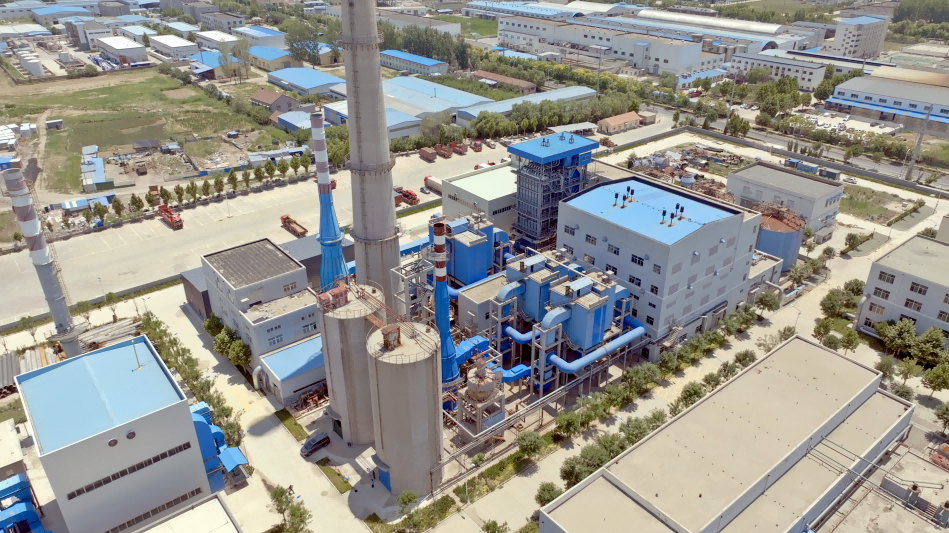
What Impact Does Fuel Quality and Consistency Have on Boiler Performance?
In industrial power station boilers—especially those burning coal, biomass, petcoke, or waste-derived fuels—fuel quality and consistency are foundational to reliable and efficient operation. Fluctuations in fuel properties such as calorific value (CV), moisture content, ash content, particle size, and volatile matter can lead to major performance challenges. These include unstable combustion, flame impingement, poor heat transfer, slagging, increased emissions, and higher maintenance frequency. High-performance boiler systems are optimized for a specific fuel specification—deviations from that baseline can quickly degrade output, efficiency, and equipment integrity.
Fuel quality and consistency have a direct and profound impact on boiler performance in industrial power plants. Variations in moisture, calorific value, ash, and sizing affect combustion stability, heat release rate, emissions, and fouling. Poor or inconsistent fuel leads to lower thermal efficiency, increased fuel consumption, higher NOₓ and CO emissions, more frequent cleaning cycles, and unplanned downtime. Reliable boiler operation depends on fuels that meet design specifications in energy content, physical properties, and combustion behavior.
Fuel isn’t just input—it’s the engine of thermal performance. If it’s unstable, so is everything else.
Inconsistent fuel quality can reduce boiler efficiency by up to 10% and increase maintenance frequency by 30–50%.True
Fuel variability causes combustion imbalances, fouling, and mechanical stress, degrading operational reliability and performance.
🔬 Key Fuel Properties That Affect Boiler Operation
| Fuel Property | Why It Matters | Performance Impact |
|---|---|---|
| Calorific Value (CV) | Determines how much energy is released per unit | Lower CV = more tons per MWh |
| Moisture Content | Absorbs combustion heat, lowers flame temp | High moisture = low efficiency |
| Ash Content | Non-combustible material leads to slag and fouling | More ash = more cleaning and erosion |
| Volatile Matter | Influences ignition and flame propagation | Low VM = harder ignition |
| Fines/Particle Size | Affects combustion air mixing and bed fluidization | Poor size control = localized burning |
Each fuel property must align with boiler design parameters for stable performance.
📊 Example: Effect of Fuel Variation on Boiler Performance
| Parameter | Designed Fuel | Variable Fuel | Impact |
|---|---|---|---|
| Calorific Value (kcal/kg) | 5,000 | 4,200 | 15% more fuel needed |
| Moisture Content (%) | 10% | 25% | Higher drying load, flame instability |
| Ash Content (%) | 8% | 15% | More slagging, less heat transfer |
| Emissions (NOₓ, CO) | Compliant | Elevated | Due to uneven combustion |
| Steam Output (TPH) | 150 | 135 | Derating under same fuel feed |
Real-world plants report 6–12% derating from poor-quality or inconsistent fuel.
🔥 Combustion Impact of Low-Quality or Inconsistent Fuel
| Problem | Root Cause | Result |
|---|---|---|
| Flame Instability | Moisture or volatile content fluctuation | Burner trips, CO spikes |
| Uneven Heat Transfer | Varying ash/fines layers on tubes | Hot spots and cold-end corrosion |
| High Stack Temperature | Low CV or excess air from moisture | Heat loss, reduced efficiency |
| Increased NOₓ | High flame temperature zones | Emissions non-compliance |
| Slagging & Fouling | High ash with low fusion temp | Tube damage, derating |
Consistent fuel = consistent flame = consistent output.
🧪 Case Study: 300 MW Coal-Fired Boiler
| Scenario | Stable Fuel | Variable Fuel |
|---|---|---|
| Daily Fuel Use (tons) | 3,500 | 3,950 |
| Stack O₂ | 3.2% | 6.0% |
| Sootblowing Frequency | 2/day | 6/day |
| Forced Outage Incidents (month) | 0.5 | 2.0 |
| Efficiency (%) | 88% | 81% |
| Additional Fuel Cost/year | — | $2.2 million |
A 7% loss in efficiency and increased cleaning needs directly impact fuel budget and uptime.
📋 Strategies to Manage Fuel Quality Risks
| Strategy | Benefit |
|---|---|
| Fuel Blending and Homogenization | Stabilizes CV, moisture, and ash properties |
| Real-Time Fuel Analyzer (NIR/XRF) | Provides on-the-fly adjustments |
| Moisture Control (Dryers/Silos) | Lowers heat loss, improves combustion |
| Fuel Procurement Contracts | Lock-in on quality spec with penalties |
| Combustion Optimization System | Adjusts air-fuel ratio dynamically |
Fuel drying and homogenization systems can increase thermal efficiency by 3–6%.True
Moisture reduction and consistency improve combustion stability and heat recovery efficiency.
📈 Long-Term Impact on Cost and Reliability
| Metric | Stable Fuel | Inconsistent Fuel |
|---|---|---|
| Fuel Cost per MWh | $12.00 | $14.40 |
| Maintenance Cost (Annual) | $500,000 | $750,000 |
| Forced Outage Rate | 2% | 5% |
| Heat Rate (kJ/kWh) | 9,500 | 10,600 |
| CO₂ Emissions (tons/year) | 1.1 million | 1.3 million |
Fuel inconsistency erodes all key performance indicators—efficiency, uptime, and compliance.
Summary
In industrial power station boilers, fuel quality is directly tied to combustion reliability, thermal efficiency, and cost control. Moisture, ash, CV, and particle size all play critical roles in determining how well the system burns fuel and transfers heat. Variability in fuel properties disrupts combustion balance, increases wear and fouling, and drives up O&M and fuel expenses. The most advanced boiler will still underperform if the fuel doesn’t match its design. Long-term operational success starts with one core truth: your boiler is only as good as the fuel you feed it.
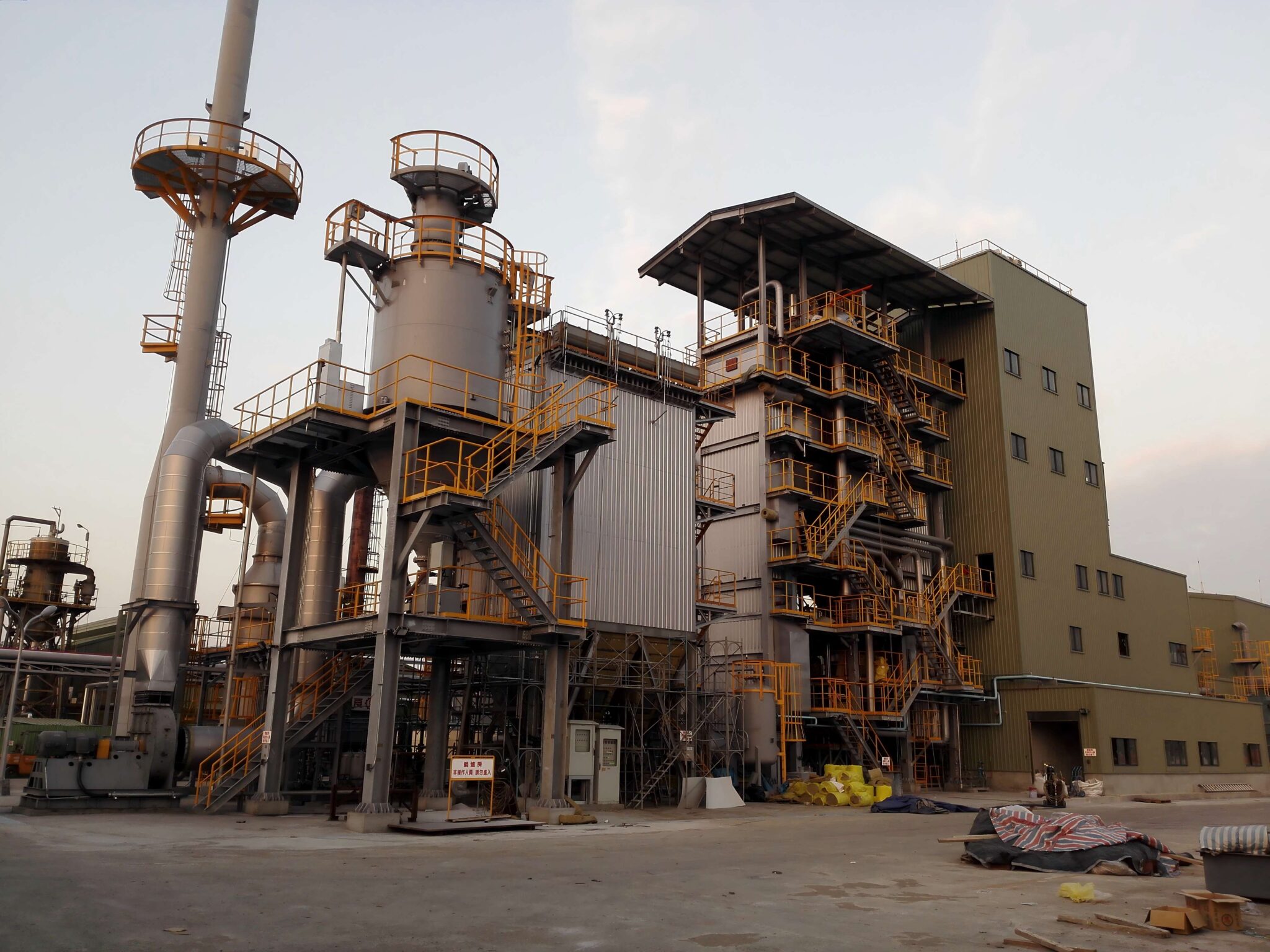
How Can Automation and Real-Time Monitoring Reduce Operating Risks and Maintenance Costs?
In large-scale industrial power station boilers, operating risks and unplanned maintenance are costly—not only in terms of downtime but also fuel waste, safety hazards, and equipment degradation. Traditional manual operation struggles to respond quickly to fast-changing combustion, load, or equipment conditions. However, with automation and real-time monitoring, boilers become intelligent systems that predict, prevent, and optimize, instead of just reacting. This reduces human error, enhances safety, and drives down operational and maintenance (O&M) costs.
Automation and real-time monitoring reduce operating risks and maintenance costs in industrial power station boilers by enabling precise control over combustion, air-fuel ratios, temperatures, and pressures while using predictive analytics to detect early signs of equipment wear, fouling, or failures. These systems automate routine adjustments, alert operators to anomalies, and trigger maintenance only when needed, preventing downtime and improving asset longevity. By reducing over-firing, avoiding thermal shock, and optimizing fuel usage, they enhance efficiency while cutting unplanned outages and maintenance expenses.
Smart boilers don’t just burn fuel—they learn, adapt, and protect themselves.
Automation and real-time monitoring reduce unscheduled maintenance by up to 40% in industrial power boilers.True
These systems catch anomalies early, preventing catastrophic failures and allowing planned interventions.
⚙️ Core Components of Boiler Automation & Monitoring
| System/Technology | Function | Impact |
|---|---|---|
| SCADA/DCS Platforms | Centralized control and data acquisition | Real-time visibility, remote ops |
| Advanced Process Controls (APC) | Dynamic load/combustion optimization | Efficiency + emission compliance |
| Smart Sensors & IoT | Pressure, temp, O₂, CO, NOₓ, vibration, corrosion | Precise diagnostics |
| Predictive Maintenance AI | Detects early failure patterns (ML-based) | Reduces emergency repairs |
| Automated Soot Blowing | Cleans only when needed based on delta-T/dP | Minimizes erosion, saves steam |
| Fuel Flow & O₂ Trim Control | Optimizes air-fuel mix in real time | Cuts fuel usage by 2–5% |
These systems run continuously, even when operators shift out.
📊 Measurable Reductions in Cost and Downtime
| Metric | Manual Operation | With Automation & Monitoring |
|---|---|---|
| Forced Outage Rate | 5–7% annually | 2–3% annually |
| Unplanned Maintenance Frequency | 10–14 events/year | 4–6 events/year |
| O&M Cost per MW | $12,000 | $8,000–$9,000 |
| Average Fuel Efficiency | 82–84% | 86–89% |
| Technician Labor Hours/Month | 300+ | 180–220 |
$300,000–$700,000 annual savings for a 300 MW unit is common with full automation.
🔍 Real-Time Monitoring Capabilities
| Parameter Monitored | Benefit to Operations |
|---|---|
| Flue Gas Composition (O₂, CO, NOₓ) | Maintains optimal combustion balance |
| Steam Drum Pressure & Water Level | Prevents drum cracking or dry-out |
| Heat Exchanger dP (delta pressure) | Triggers soot blowers when fouling detected |
| Vibration/Temp on Bearings | Detects fan/pump failures early |
| Tube Wall Temperature | Prevents overheat and creep |
| Ash Build-Up Sensors | Initiates automated ash extraction |
Operators are notified before failure occurs, allowing planned interventions.
🧪 Case Example: 500 MW Coal Power Boiler (With vs. Without Automation)
| Operational Metric | Manual (Legacy) | Automated (Modernized) |
|---|---|---|
| Average Boiler Efficiency | 83% | 88% |
| Forced Shutdowns (per year) | 5 | 1–2 |
| Maintenance Cost/Year | $1.2 million | $750,000 |
| Emission Non-Compliance Events | 12 | <2 |
| Fuel Use Reduction | — | 3.5% (~35,000 tons/year) |
NPV of automation system investment over 10 years: ~$3–4 million positive ROI.
📋 Risk Factors Reduced by Automation
| Operational Risk | Prevention via Monitoring/Automation |
|---|---|
| Tube Rupture/Overheat | Real-time TMT and flow monitoring |
| Combustion Instability | Auto air-fuel ratio balancing |
| Excessive Emissions | O₂/CO/NOₓ tuning with feedback loops |
| Unnoticed Water Leaks | Feedwater and drum level precision |
| Manual Operator Error | Rule-based controls and interlocks |
Predictive monitoring and digital control reduce major boiler failures by detecting degradation trends early.True
This prevents catastrophic breakdowns that would otherwise be unanticipated in manual systems.
📈 Strategic Long-Term Benefits
| Benefit | Description |
|---|---|
| Efficiency Improvement | 2–5% less fuel per MWh |
| Maintenance Planning | From reactive to proactive |
| Emission Compliance | Real-time adjustment to stay within limits |
| Staff Optimization | Fewer manual checks = focused skilled labor |
| Extended Equipment Life | Reduced thermal/mechanical cycling |
| Lower Insurance Premiums | Due to reduced risk and incident rate |
Summary
Automation and real-time monitoring systems are not just technological luxuries—they’re operational necessities for today’s industrial power boilers. By continuously optimizing combustion, tracking performance, and predicting maintenance needs, these systems reduce fuel consumption, equipment wear, operating risks, and maintenance costs. Plants that invest in digital transformation gain more than just efficiency—they gain resilience, reliability, and readiness. In modern power generation, the smartest boilers aren’t just steel—they’re software-powered systems built to thrive.
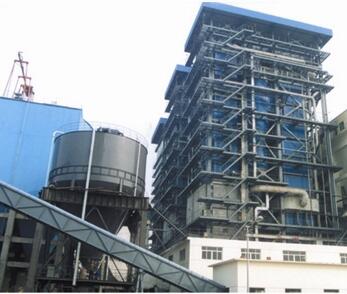
What Role Does Predictive Maintenance Play in Minimizing Downtime and Repair Expenses?
Industrial power station boilers operate under intense thermal, mechanical, and chemical stress. With equipment working continuously at high temperatures and pressures, even minor component degradation can lead to catastrophic failures, forced outages, and multi-million-dollar repair bills. Traditional maintenance schedules—based on fixed intervals or reactive strategies—are often inefficient, either causing unnecessary shutdowns or allowing small issues to escalate. Predictive maintenance, powered by real-time monitoring and data analytics, revolutionizes this by using equipment condition and performance trends to detect faults before they cause downtime.
Predictive maintenance plays a critical role in minimizing downtime and repair expenses in industrial power station boilers by continuously analyzing sensor data, performance deviations, and historical failure patterns to detect early signs of wear, overheating, or mechanical anomalies. It enables targeted maintenance interventions before breakdowns occur, extends component life, optimizes spare parts inventory, and reduces the frequency and cost of emergency shutdowns. By transitioning from reactive to predictive strategies, power plants significantly improve availability, reduce O&M costs, and enhance operational safety.
In a high-stakes environment like power generation, predictive maintenance isn’t just smart—it’s mission-critical.
Predictive maintenance reduces unplanned boiler outages by up to 50% in industrial power plants.True
Real-time condition monitoring detects early signs of failure, enabling preventive action before serious damage occurs.
🔧 How Predictive Maintenance Works in Power Boilers
| Component | Sensor Data Collected | Common Predictive Algorithms Used |
|---|---|---|
| Boiler Tubes | Wall temp, acoustic emissions, corrosion rate | Thermal fatigue modeling, crack propagation |
| Fans, Motors, Pumps | Vibration, temp, current draw | Vibration trend analysis, motor signature |
| Burners | Flame stability, gas pressure | Combustion stability analytics |
| Superheater & Reheater | Tube wall temp, steam flow | Hot spot detection, creep models |
| Soot Blowers | Delta-T, fouling rate | Cleaning need prediction |
Data is streamed to digital twin or AI models that compare current vs. optimal conditions.
📊 Maintenance Cost and Downtime Comparison
| Maintenance Strategy | Annual Unplanned Downtime | Annual Maintenance Cost | Forced Outages/Year |
|---|---|---|---|
| Reactive (Run-to-Failure) | 8–12% | $1.2–1.5 million | 4–6 |
| Preventive (Time-Based) | 5–7% | $900,000 – $1.2 million | 2–4 |
| Predictive (Data-Driven) | 2–4% | $600,000 – $950,000 | 0–2 |
Predictive programs often pay for themselves in 1–2 years via avoided downtime alone.
🧪 Example: Predictive Tube Failure Avoidance
| Parameter | Without Monitoring | With Predictive Maintenance |
|---|---|---|
| Tube Rupture Incident | Undetected creep | Identified hot spot early |
| Shutdown Time | 7 days | 8-hour planned replacement |
| Repair Cost | $250,000 | $30,000 |
| Fuel Loss & Missed Power | $600,000 | $40,000 |
| Total Savings | — | $780,000 |
A single avoided rupture covers the cost of sensors and analytics for years.
📋 Key Predictive Maintenance Technologies
| Tool/Technology | Function | Example Equipment Targeted |
|---|---|---|
| Infrared Thermography | Detects tube hot spots, insulation loss | Steam headers, superheaters |
| Ultrasonic Thickness Gauging | Measures wall thinning | Waterwall, economizer tubes |
| Vibration Analysis | Identifies imbalance and bearing issues | ID/FD fans, feed pumps |
| Oil & Grease Analysis | Detects metal wear particles | Turbine gearboxes, pump shafts |
| AI & Machine Learning Models | Forecasts wear trends and optimal replacement | Across boiler and auxiliaries |
Integrated into SCADA/DCS systems or run through cloud-based predictive platforms.
📈 Strategic Benefits Over Boiler Lifecycle
| Benefit | Result |
|---|---|
| Extended Equipment Life | Less stress and early failure |
| Lower Repair Costs | Avoids catastrophic failures |
| Increased Uptime | Fewer outages, better dispatchability |
| Optimized Labor Use | Focused intervention instead of routine |
| Better Spare Parts Planning | Reduces emergency inventory spend |
Predictive maintenance cuts boiler repair costs by 25–35% by replacing components at the optimal time.True
Early detection enables lower-cost, planned repairs rather than expensive emergency fixes.
🧠 Predictive Maintenance vs. Preventive Maintenance
| Feature | Preventive Maintenance | Predictive Maintenance |
|---|---|---|
| Schedule Basis | Calendar/time-based | Condition-based, real-time |
| Equipment Downtime | Periodic, often early | Only when needed |
| Maintenance Cost | Moderate to high | Lower long-term |
| Failure Risk | Reduced, but not eliminated | Very low if well managed |
| Required Tools | Checklists, inspections | Sensors, analytics, software |
Predictive maintenance maximizes asset performance per dollar spent.
Summary
Predictive maintenance transforms boiler reliability from guesswork to science-backed certainty. By continuously monitoring equipment health and applying AI-based analytics, plant teams can anticipate and prevent failures, dramatically reducing downtime, repair costs, and operational risk. In high-pressure environments like power generation, predictive strategies protect productivity, safeguard assets, and support regulatory and financial performance. With the right tools and insights, predictive maintenance helps your boiler run not only longer and cleaner—but smarter.
🔍 Conclusion
Optimizing the performance of an industrial power plant boiler is a continuous process that requires engineering precision, proactive maintenance, and digital insight. From combustion control to fuel quality management and heat recovery, each improvement contributes to lower fuel bills, higher output reliability, and reduced environmental impact. Smart optimization ensures your boiler remains a cost-effective and future-ready energy asset.
📞 Contact Us
💡 Need help improving the efficiency of your power plant boiler? We offer full-system audits, combustion tuning, automation upgrades, and lifecycle cost consulting tailored to industrial energy producers.
🔹 Contact us today to turn your boiler system into a high-efficiency, low-cost power generator! ⚡🔥📉
FAQ
What are the best ways to optimize industrial power plant boiler performance?
To reduce operating costs and improve reliability:
Implement real-time combustion tuning
Maintain optimal air-to-fuel ratio
Install economizers and air preheaters
Conduct predictive maintenance and regular inspections
Use automated control systems for performance tracking and load balancing
How does combustion control improve efficiency and reduce costs?
Advanced oxygen trim systems and flue gas analyzers dynamically adjust air and fuel inputs for optimal combustion. This reduces excess air, improves heat transfer, and minimizes fuel waste—cutting fuel costs by 3–8% annually.
What is the role of heat recovery systems in performance optimization?
Heat recovery systems like:
Economizers (preheat feedwater)
Air preheaters (warm combustion air)
Blowdown heat recovery units
can improve overall thermal efficiency by 5–10%, lowering fuel demand and emissions.
Why is load management important in power plant boilers?
Running boilers at stable, optimized loads (70–90%) avoids short cycling, improves combustion consistency, and minimizes stress on components. Integrating load-sharing controls and modulating burners helps align steam output with real-time demand.
How can maintenance reduce long-term operating costs?
Routine and predictive maintenance extends equipment life and ensures high efficiency. Key tasks include:
Cleaning heat exchanger surfaces to prevent fouling
Monitoring erosion/corrosion of tubes and pressure parts
Calibrating control sensors
Inspecting pumps, fans, and valves
Proper maintenance prevents costly downtime and energy waste.
References
Industrial Boiler Optimization Guide – https://www.energy.gov
Power Plant Efficiency and Load Management – https://www.iea.org
Combustion Tuning and Fuel Savings – https://www.researchgate.net
Heat Recovery Systems in Power Boilers – https://www.sciencedirect.com
Predictive Maintenance in Thermal Plants – https://www.epa.gov
Air-Fuel Ratio Control Technologies – https://www.bioenergyconsult.com
Steam System Optimization Techniques – https://www.energysavingtrust.org.uk
Advanced Control Systems for Boiler Efficiency – https://www.automation.com
ASME Boiler Performance Standards – https://www.asme.org
Boiler Energy Efficiency Practices and Trends – https://www.mdpi.com

